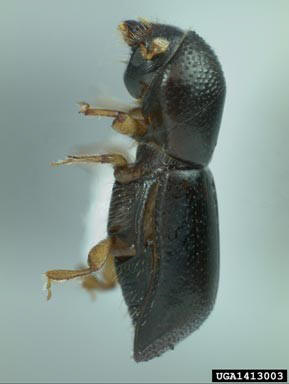
Importance: The redbay ambrosia beetle (Xyleborus glabratus), that is native to Southeast Asia was first identified in a survery trap in Port Wentworth, GA in 2002. It vectors a fungus (Raffaelea lauricola) into its host tree that causes laurel wilt disease. In North America, trees in the Lauraceae (laurel) family are susceptible to this non-native pest. Redbay, swamp bay, silk bay, sassafras, avocado, bay laurel, California laurel, and gulf licaria are susceptible to attack from the redbay ambrosia beetle. Other potential host species are pondspice, pondberry, Northern spicebush, and camphortree.
Identification: The redbay ambrosia beetle is approximately 1/16 inch long, dark brown to black with a cylindrical-shaped body. It has a smooth upper body surface with a few hairs and a downward sloped rear. Male beetles are slightly smaller with horn-like spines extending over the head.
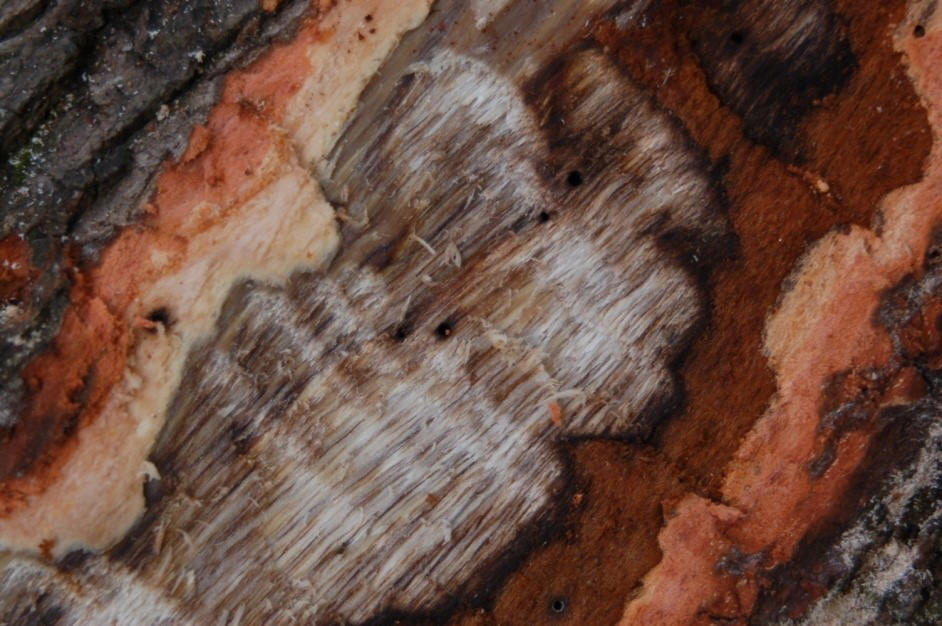
Disease Cycle: The redbay ambrosia beetle is attracted to odors emitted from the host tree’s trunk and leaves. Once a host tree is located, the female beetle flies and bores into the tree creating galleries in the wood. The female beetle carries a deadly fungus on its body that is vectored into the tree. The fungus spreads into the xylem tissue. The tree responds by clogging its vascular system. The flow of water and nutrients is disrupted, resulting in dark streaks in the sapwood. The eggs from female redbay ambrosia beetles will hatch and the larvae will feed on the vectored fungus in the wood. As larvae mature to adult beetles, the males and females mate. The male beetles remain in the tree mainly for reproduction purposes. Once the young beetles complete their development, the female beetles leave the tree to find new host species. This cycle takes approximately one to two months to complete.
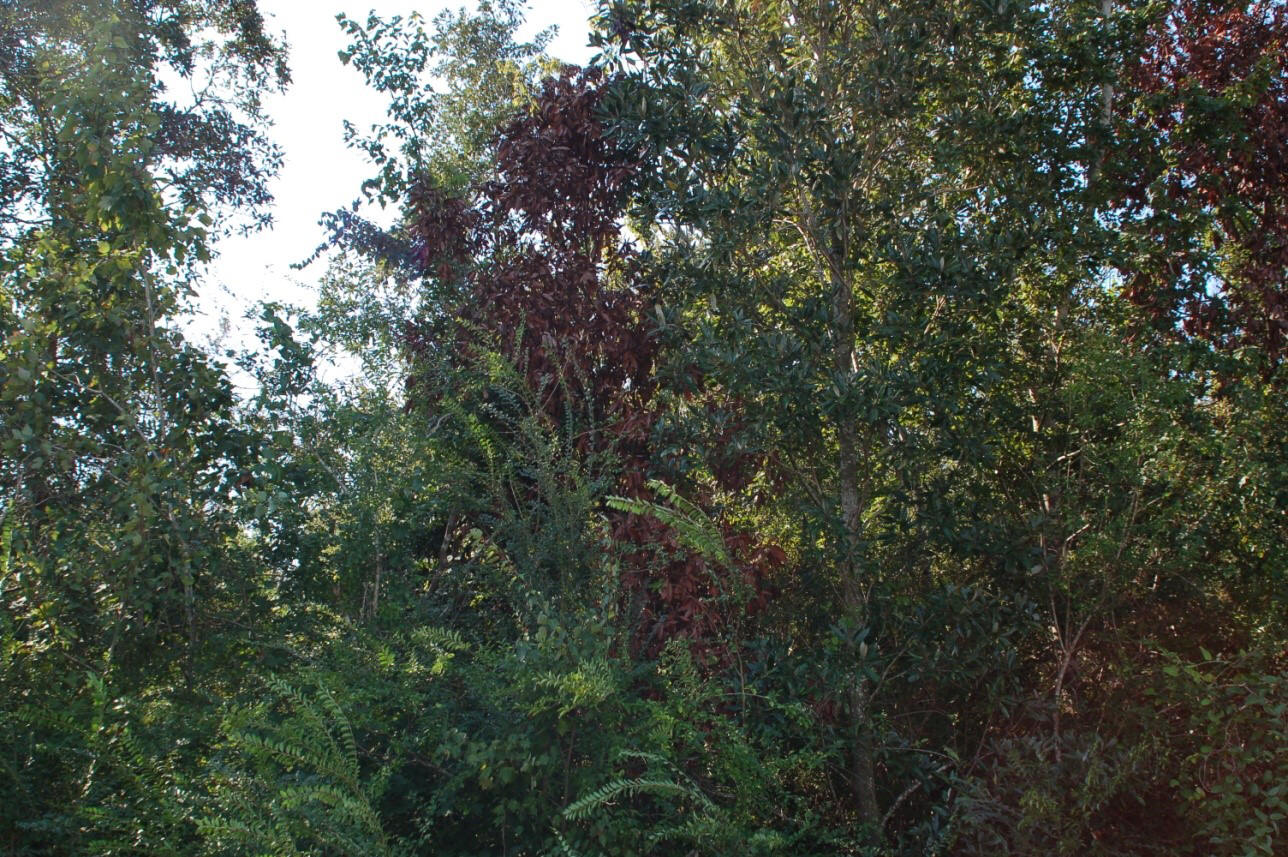
Signs and Symptoms: The first noticeable symptom on the infected tree is green wilting leaves turning olive-grey to reddish-brown. These leaves will first appear on an isolated branch, but as the infection progresses, this symptom will spread throughout the entire crown. For redbay, swamp bay, and silk bay, the brown leaves may persist on the dead tree for up to a year. For sassafras, the wilting brown leaves will defoliate from the tree. At this stage of the infection, dark purple to black streaks in the sapwood are visible. Occasionally, small round entrance holes are noticeable on stems. Toothpick-like tubes of compacted sawdust may protrude from these entrance holes. Later in the infection, an accumulation of boring dust will exist on the lower trunk and ground. The tree will die within 4 to 12 weeks after the initial attack.
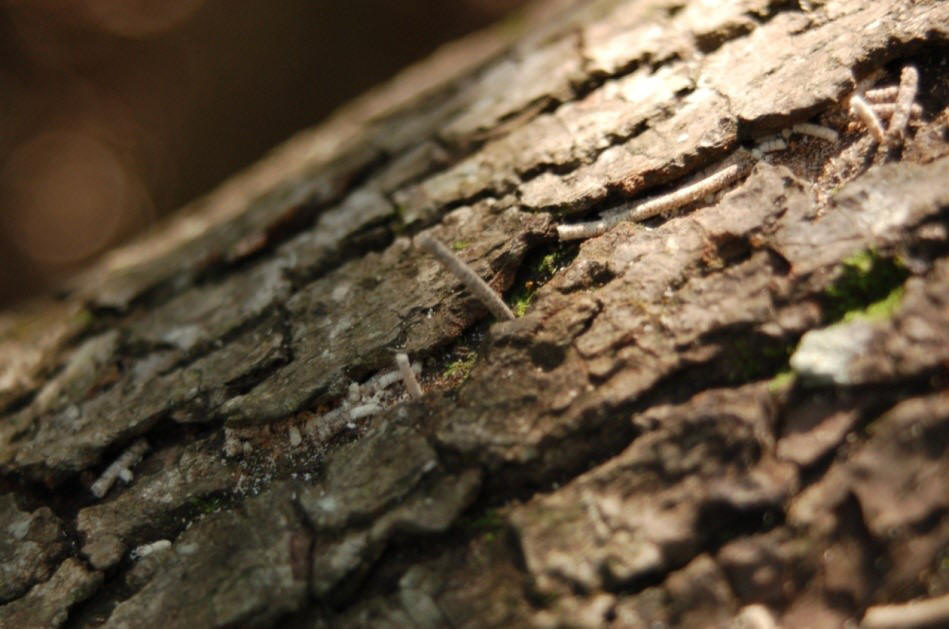
Control: Several control methods have been implemented, but nothing has completely stopped the spread of laurel wilt disease. There are, however, fungicides on the market that are effective in controlling the progression of the laurel wilt fungus. One in particular, propiconazole, under the common name Alamo, is a systemic fungicide that is used for several fungal diseases of trees. Alamo can be used on recently infected trees; but it is best used as a preventative treatment. Though not practical for trees in forested areas, high value or historic host trees can benefit from fungal treatment. Non-symptomatic host trees within 100 feet of infected ones can be injected with Alamo. The effectiveness of this fungicide can last from 12 to 24 months, depending on the size of the tree.
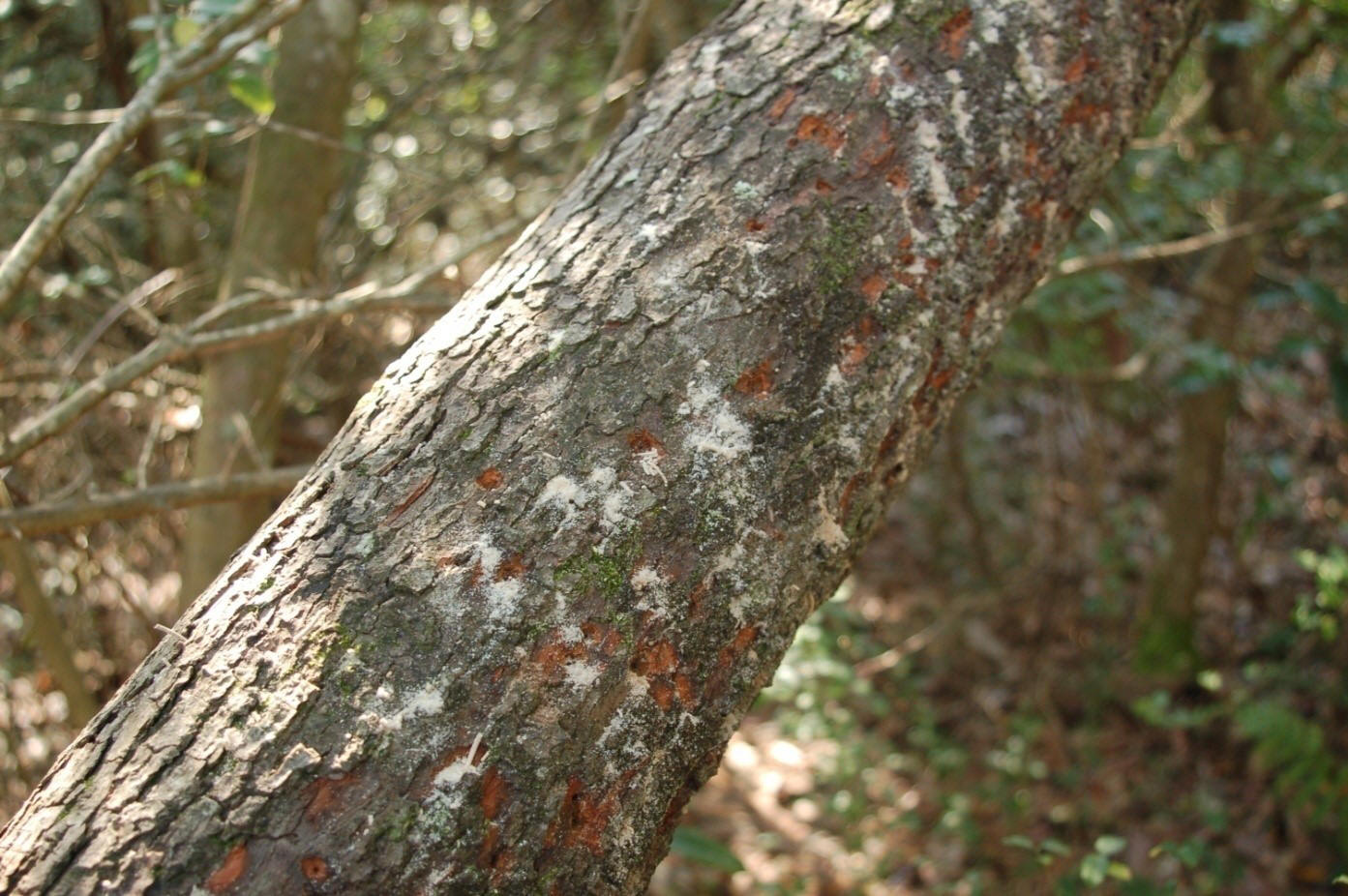
The best recommendation for laurel wilt disease, however, is to prevent the introduction of this pest through early detection and destruction of infested trees. Cut down the infested tree, chip the wood into 1 square inch pieces or smaller and burn the debris at the original location. If burning is not possible, cut down the tree, chip the wood into 1 square inch pieces or smaller, and leave the debris on site. Tarpaulin or other types of plastic covering can be placed over the chipped debris for an extended time to reduce the emergence and survival of the pest. Grinding the infected stumps down to soil level may kill any remaining redbay ambrosia beetles. Since this exotic beetle can live in cut wood, do not move infested wood debris or firewood long distances into other areas. If travelling to another destination for recreational activities, buy local firewood. For precautionary purposes, clean or sterilize all felling equipment after salvaging an infected tree. Following these management and preventative activities can drastically reduce the spread of this exotic pest.
Additional Resources